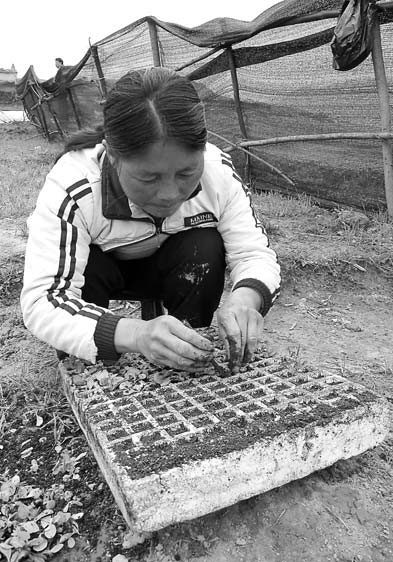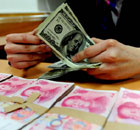Society
Dry spell hits where it hurts
By Wang Huazhong in Guizhou, and Peng Yining and Li Yingqing in Yunnan (China Daily)
Updated: 2010-04-09 07:17
 |
Large Medium Small |
Running on empty
|
 Ye Qinghong, 42, a farmer in Guizhou, tries to replant her tobacco seedlings. She said that if they do not grow she will have to consider fi nding a job in a factory in East China. [China Daily] |
China previously had six years of good harvests before the drought and, as the southwest accounts for only 2 percent of the annual grain production, feeding the region should not be a major problem.
However, the biggest challenge - the lack of rainfall - is far from solved, said publicity official Zheng.
Between July 2009 and last month, most areas of Guizhou have seen a 20 to 50 percent drop in rainfall, according to figures from the provincial water resources bureau. About 3,600 rivers and brooks have run dry, while water reserves in ponds and reservoirs have fallen by 368 million cubic meters over the last 12 months to below 779 million cu m.
Most farmers in the province grow water-guzzling crops like rice, tobacco and vegetables (potatoes and corn need less water but they also generate less revenue), but as the peak planting time is usually around Tomb-sweeping Day, which this year fell last Monday, the lack of water meant farmers were forced to delay spring cultivation. The hold up will "prevent seedlings from developing normally", said Zheng, while farmers complained the ground is too hard to plow.
Lu Guangfu, a 41-year-old villager in Yizhai, said his attempts to till his land after a recent shower failed as the oxen refused to pull after a few steps. "The land is as hard as stones," he said as he slammed his hoe into the soil.
However, time is running out. Although meteorology authorities predict the drought will last until the end of May, in just four weeks China will enter a long, hot summer, by which time it will be too late to plant. Farmers say getting seedlings ready to be replanted in the fields takes 40 days.
Even if the seedlings are successfully planted, the drought is also sparking conflicts over how much of the region's limited water resources should be used to irrigate them.
Almost 6 million people and 2.5 million cattle do not have enough available drinking water, despite government efforts to find new sources and ship supplies to remote areas, said the Guizhou water resources bureau.
Authorities in Yunwu town in the south of the province are closely regulating water from Wudaohe River so that it is "only used for drinking, and not watering paddies or seedlings", said resident Lin Xiaolong, 55. He explained the move followed a media report that the river's water reserves had already fallen from 2.7 million cu m to just 300,000 cu m.
"I can understand the difficult situation and I support the government's decision, but now is the time to raise seedlings," he said. "Only about one-fifth of farmers have bothered to buy rice seeds. Others felt that, without enough water, the seedlings would go to waste if no rain comes."
Provincial water resources and agriculture authorities both endorsed the principle that "drinking water comes first, then production".
"Our priority, like in other regions, is to guarantee drinking water supplies for the public. People's lives comes first," said Wang Kaizhi, director of the drought relief office in the city of Duyun. "Our functioning water resource projects can only relieve the impact of the drought on spring cultivation to some extent."







